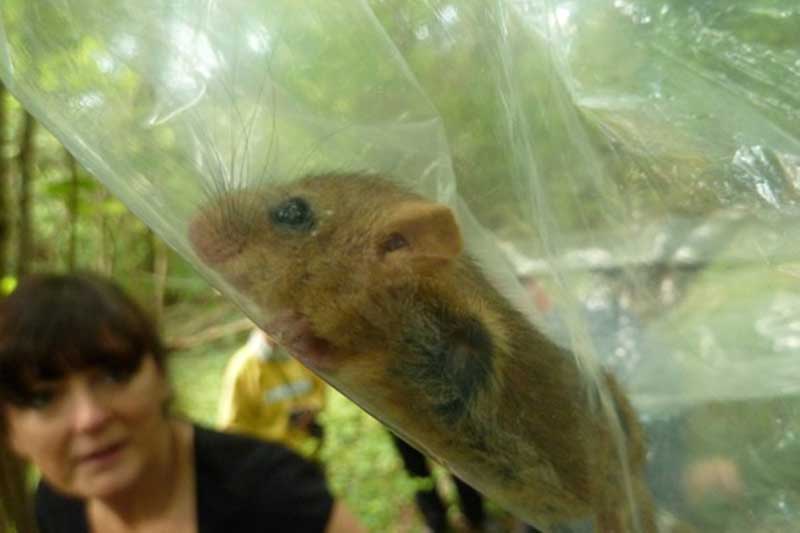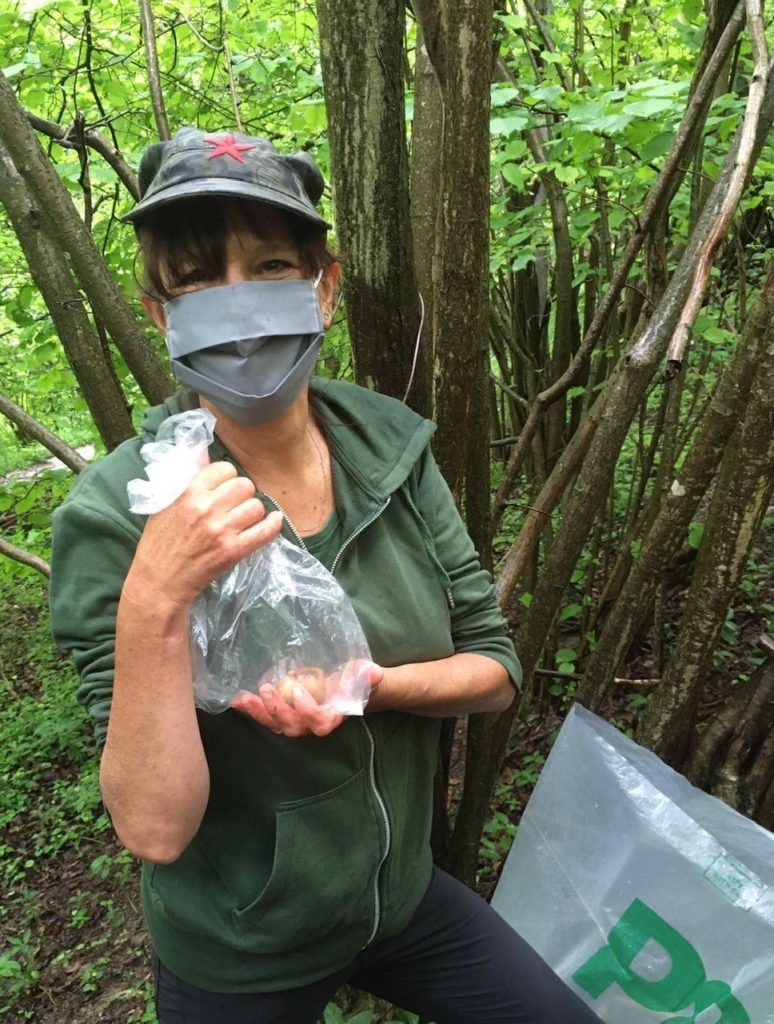Along with our partners at Natural England, PTES collate records from over 400 dormouse monitoring sites across the UK. The NDMP now has hundreds of trained monitors regularly checking dormouse boxes throughout the year. We’re extremely grateful to all our dormouse monitors for their great contribution to dormouse conservation.
How long have you been monitoring for?
My name’s Kathryn Killner and I’ve been monitoring dormice at Norbury Park in Surrey since 2013. As a child I loved wildlife and nowadays I’m lucky enough to be able to spend much of my work and play outdoors surrounded by it.
My love of dormice started with a brief chat at the PTES stand at Rutland Bird Fair in 2010. I went home later that day with the hope I might actually be able to see one. Investigations online led to the Surrey Dormouse Group, at that time under the umbrella of Surrey Wildlife Trust. I went on my first box check the very next month and was so excited to finally see a dormouse. Nearly eleven years on and I now do the group’s admin, processing memberships and answering email queries. I give talks, teach training courses and mentor volunteers working towards their licence as well as a couple of box checks a month; it’s safe to say that dormice have become a rather large part of my life!
Describe your woodland and why it’s special to you.
Norbury Park is a mixed, partly ancient, woodland, bordering chalk grassland and part of the Mole Gap to Reigate Escarpment SSSI/SAC, within the Surrey Hills AONB. There is so much variety there. Our box checks always involve botany as well as dormice. There’s also a badger sett near by which we keep our eye on for recent activity, and we’ve been known to spend half an hour at one large fallen tree getting overexcited about fungi!
We carried out a nut hunt in autumn 2012 and found one dormouse-nibbled nut in the hazel coppice section where we now have our NDMP site. The following March, I helped put up 50 boxes and, as I had just gained my licence, took on the monitoring, so I’ve been there right from the beginning and seen it develop. In June that year we found our first dormouse which is one of my most exciting dormouse moments!
What’s been the most memorable day you’ve had looking for dormice?
It’s always a good feeling finding the first dormouse of the year but when you find one that you know you’ve met before it’s all the more special. I fur clip so we’re able to identify dormice within the season but when they have a distinguishing feature, they’re recognisable even after hibernation. One in particular stands out. She was born in September 2017 and, as with 95% of Norbury dormice, had a white tip to her tail but hers was much longer and brighter than any of her litter mates, so we named her ‘Snowy’. We saw her again later that year and were very pleased to find her again in July 2018 with a litter of young and then again in October with a second litter (one of two females that year that we know bred twice in that long summer). I like to think she’s still out there somewhere although we haven’t seen her since.

What are the challenges for dormice or the monitors at the site?
The hazel hasn’t been coppiced recently and the site’s started to feel very shaded later in the summer, with the hazel fruiting higher up in the canopy, so there’s less incentive for the dormice to come into the centre of the wood. The site would benefit from some management to let more light in and SDG is working with Surrey Wildlife Trust, who manage the site, to make this happen.
Increased disturbance, particularly in the past year, may also be affecting the numbers of dormice found on checks. Norbury Park is used by families, dog walkers, mountain bikers and horse riders. Although they all usually stick to the main paths we do find evidence of gatherings in the woods themselves, with structures built from fallen branches and debris left behind, within metres of our boxes.
We have peaks and troughs of dormouse numbers. Our highest numbers were in 2014 and 2018 with 63 and 58 dormice recorded respectively over the whole season, including young, down to 24 in 2020. It’s been a slow start this year with none found yet but hopefully with warmer weather we’ll start to see some out and about and breeding soon.
Tell us something about you we wouldn’t expect from a dormouse monitor.
Many years ago I worked for Garrard, the Crown Jeweller and handled priceless jewellery and objects belonging to the Royal Family and the rich and famous. It’s a very different world from the one I’m in now and there is no doubt in my mind where I would rather be!
If you’d like to support our work and help us continue conserving this vulnerable species, please donate or set up a direct debit here today. Thank you.

